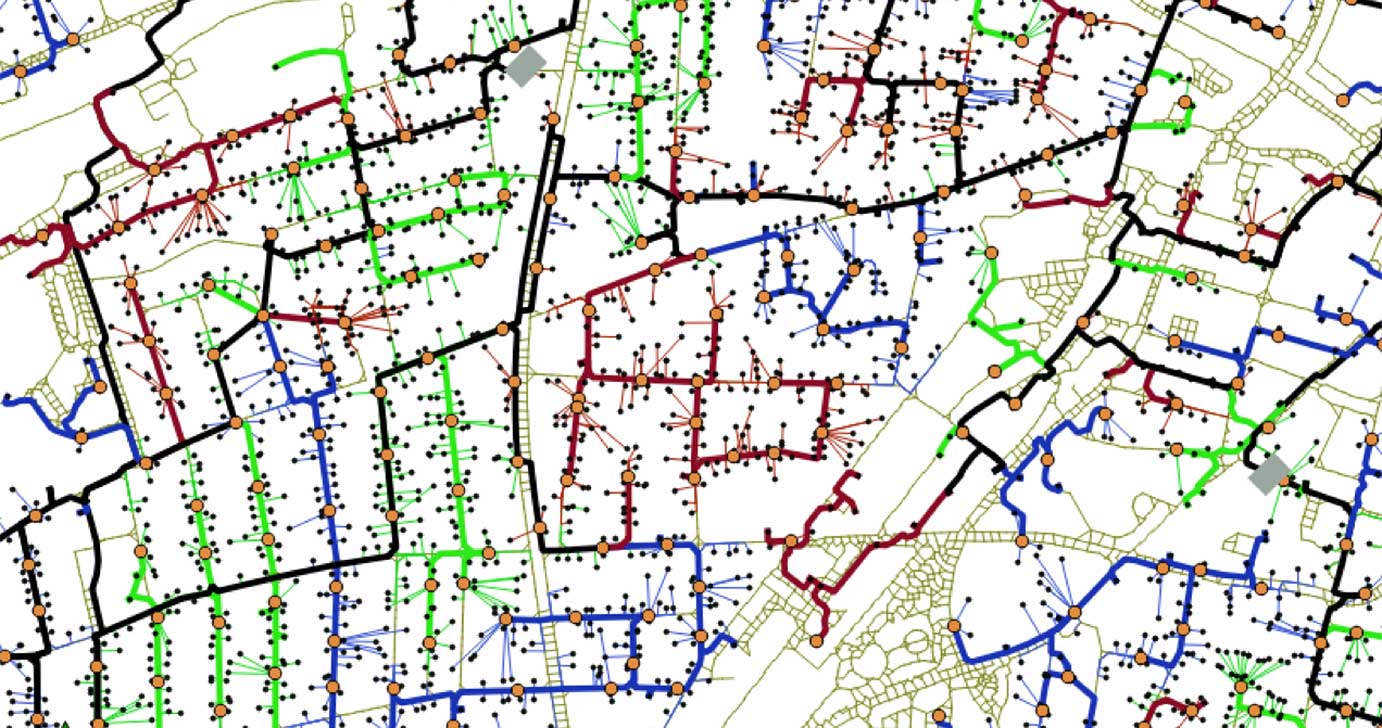SMART-DS: Synthetic Models for Advanced, Realistic Testing: Distribution Systems and Scenarios
Synthetic Models for Advanced, Realistic Testing: Distribution Systems and Scenarios, or SMART-DS, offers high-quality, "realistic but not real" distribution network models and advanced tools to generate scenarios on those models.

The SMART-DS data sets provide standardized distribution network models that have been validated against thousands of real utility systems. The networks are generated using the Reference Network Model developed by Universidad Pontificia Comillas and connect customer loads to transmission substations through a network topology that includes high-, medium-, and low-voltage powerlines with electrical equipment such as transformers, capacitors, regulators, fuses, and reclosers. Geographical constraints such as topology, street maps, and building footprints allow the networks to be embedded in real urban and rural areas. SMART-DS users can test distributed automation algorithms, advanced distribution management system capabilities, and other emerging distribution technologies on standardized, full-scale, synthetic distribution networks.
SMART-DS includes numerous scenarios that augment the distribution network models. The scenarios include multi-year time series load and weather patterns, solar power and battery adoption patterns, demand-responsive customers, and outage scenarios. Use cases include volt/VAR optimization, distribution system reconfiguration, and single-period distribution-optimal power flow. Additional scenario creation capabilities can modify transmission system generation mixes and obtain wind and solar resource and power data. The SMART-DS platform is developed in partnership with Comillas-IIT, MIT, CYME International, and Electrical Distribution Design.
Capabilities
- Numerous combinations of distributed energy resources and inverter technologies
- Standardized locations of demand-responsive customers, electric vehicle charging locations, line outages, and grid monitoring equipment
- Detailed statistical summary of the distribution system
- Decomposition of models into substation and feeder sub-models for ease of access
- World-class, high spatial/temporal resolution of solar and wind resource data
- Time series data with end-use breakdowns for algorithm performance evaluation over the full range of operating conditions
- Systems up to 600+ substations, 2,000+ feeders, and 4+ million customers
Outcomes
The SMART-DS data sets are available through the Open Energy Data Initiative as well as the GRID DATA program data repositories: BetterGrids and DR POWER.
SMART-DS contributed to the development of the Distribution Transformation Tool (DiTTo), which enables programmatic development of distribution models as well as translations between data formats. SMART-DS also produced three additional open source software tools:
layerstack: Python package for assembling workflows, especially those associated with modifying, running, and analyzing simulation models
R2PD: Power system modeler-friendly tool for downloading wind and solar power and forecast data
sssmatch: Apply NLR Standard Scenario generation mixes to arbitrary transmission systems.
SMART-DS has also been a critical component of numerous projects, including:
Grid-Enhanced, Mobility- Integrated Network Infrastructures for Extreme Fast Charging
Situational Awareness of Grid Anomalies
Contact
Share
Last Updated Dec. 6, 2025
